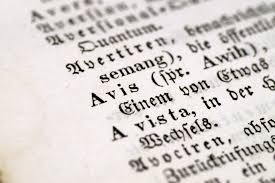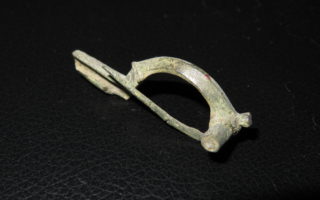Hi to all of you ! How are you ? Two weeks ago we saw The Theodosian dynasty. We are therefore going to talk about the end of Roman history with the last reigning emperors. So here we will see who it was, when it happened…. Now let’s get to the heart of the matter and, above all, enjoy your reading.
Context of the “last emperors”
The term “last emperors” is used to define the last period of the Western Roman Empire. Indeed here we are not going to talk about the Eastern Roman Empire. Quite simply because as Marcian was considered the first Byzantine emperor to reign, it therefore means that this part of the Empire became the Byzantine Empire. Therefore, it is no longer in the context of the Roman Empire. To come back to the western part, nine emperors will follow one another with rather short reigns. Indeed, the period of the “last emperors” lasted only about 20 years.
Who reigned at this time?
The emperors who reigned were Petronius Maximus (March 455 AD – May 455 AD), Avitus (July 455 – October 456 AD), Majorian (April 457 AD – August 461 AD), Libius Séverus (November 461 AD) – August 465 AD), Anthemius (April 467 AD – July 472 AD), Olybrius (July 472 AD – November 472 AD), Glycérius (March 473 AD – June 474 AD), Julien Nepos (June 474 AD – August 475 AD) and Romulus Augustule (October 475 AD – October 476 AD).
(A small parenthesis to tell you that the times between reigns such as between Libius Severus and Anthemius are quite normal. These are interregs. These are periods during which the title of emperor is vacant).
Now that we know the makeup and background surrounding the last emperors, let’s see what happened during this time.
History of the last emperors of the West
The last period of Roman history began with the reign of Petronius Maximus. During his reign, he allied with the Gallo-Roman aristocracy and the Theodosian dynasty, notably by marrying Licinia Eudoxia, the widow of Valentinian. However, the latter was already promised to Hunéric, the son of Genseric: a vandal king. Then Genseric launched a vast offensive with his fleet towards Rome. As soon as the Vandals arrived, all the Romans, even Petronius Maximus, fled. However, the latter did not get very far because the people, seeing his lack of courage, massacred him and threw the remains of his body in the Tiber.
Following this, more than a month later, Avitus became emperor. Thus, it was in 455 that he was named emperor. But because of his Gallic origins, he struggled to be accepted as emperor by the inhabitants of Italy. Following the failure of his campaign against the Vandals and the blockade of Rome by the latter, his reign becomes difficult. As a result, a coup d’etat is created. He is therefore forced to flee to Arles. There, he assembles a small army with the men he has on hand and returns to Italy in an attempt to regain control but loses at Plaisance. He was taken prisoner and the title of Bishop of Plaisance was offered to him, but very quickly the Senate decided to decline this proposal.
Subsequently, he was afraid of being assassinated and therefore returned to Gaul, but died on the trip under mysterious conditions. He was reportedly buried in the town of Brioude, at the Saint-Julien altar. During his life, he owned several homes, land and a lake near the present city of Clermont-Ferrand.
After Avitus, Majorien is proclaimed emperor by the army. He begins by taking back the city of Lugdunum from the Burgondes, a German people. Then thereafter, he took measures in the social framework, in particular with regard to taxes and the power of the Church. Finally, he launched an offensive against the Vandals in North Africa, but his fleet was destroyed. He therefore returns to Italy and will be prisoner and killed by Ricimer, a Romanized general.
Following the death of Majorian, an interregnum of about three months will take place and will end when Libius Severus or Severus III is appointed emperor by Ricimer. Throughout his reign, Ricimer ruled power and Severus III was of no use. He died in 465 AD.
Then, a very long interregnum of two years takes place and will end with the rise to power of Anthemius. The latter began his reign by launching a military operation against King Génséric but it failed. He also lost his troops in Gaul, facing Euric: a Visigothic king. As a result, Ricimer (whom we talked about earlier) is “pissed off” by the results Anthemius is getting. He therefore decides to take an army of 6000 soldiers and attack Rome. After a two-month siege, he eventually captured the Emperor and had him executed.
This time, there was no interregnum as Olybrius was appointed emperor while Anthemius was still alive and he took office immediately after his execution. However, he had no power. Indeed, he reigned only in Italy and was not recognized by Leo I, the Emperor of the East. Also, he did not have time to perform any actions because he died a few months after the start of his reign.
Once again, an interregnum took place and lasted four months. Glycerius then became emperor. But, he is not recognized by the Emperor of the East: Zeno. And the latter will appoint Julius Nepos as the new emperor. So he goes to Rome and Glycerius, has no other choice but to flee. Except that the Senate closes the gates of the city to him and he finds himself blocked. On the arrival of Julius Nepos, he surrendered without a fight and ended his life as bishop.
Julius Nepos was appointed emperor by his army and therefore took power directly. However, he is not well liked by his people and Euric, who is expanding his territory, takes land in Nepos in exchange for peace. Subsequently, Nepos is overthrown by his general Orestes and therefore decides to flee in 475 AD and will be executed in 480 AD, with the help of Glycérius.
Finally, Romulus Augustule the last emperor, is appointed to power. However, he is young and it is his father, Orestes who mainly makes the decisions. Romulus Augustule is therefore mainly symbolic and remains in the shadow of Orestes. Finally, Odoacre: a king, had Orestes executed and took the city of Ravenna, where the emperor was located. Romulus Augustule therefore has no choice but to surrender. So with his reign, the Roman Empire comes to an end.
Summary
“The last emperors” was therefore the last period of the Roman Empire, the one that saw it disappear. It was sown with unrest due to the barbarian invasions but also, it was marked by disrespect towards the emperors who did not reveal themselves for the most part. This Empire, so powerful in its beginnings, ended miserably in fear and invasions. Also, its last emperor Romulus Augustule bore the same name as Romulus, the founder of Rome. So the circle was closed.
This article is now finished and with it the series of articles devoted to Roman history. Hope you enjoyed it, if so please let me know in the comments space and also tell me what topic you would like me to talk about in a future post. In fact, for the next article, we’re going to talk about the “5 craziest Roman emperors.” Also, I’m sorry, but due to my studies and the approaching reviews, the posting frequency will drop from one article per week to one article every two weeks. It should return to normal in July. Have a great week and see you in two weeks!
Receive my free book Around Roman the Coin by clicking here




